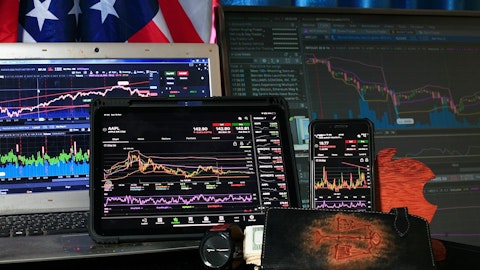Ever wonder about the difference between a morning star and an evening star or how to identify them? Wonder no more! Here is an overview of these two popular price patterns and what they mean for you.
Morning Star: A pattern that represents a new trading day. A morning star pattern can be short 1-4 days, long 7-10 days, or very long over 20 days.
Evening Star: A pattern that represents an old trading day. It is a bearish reversal pattern. An evening star pattern can be short 1-4 days, long 7-10 days, or very long over 20 days.
Example of a Morning Star
The flagpole is the first day with a significant bullish move after a series of lower highs and lower lows. The second red bar on the left side of the daily candle shows an increase in volume and price action breaking above the prior high. The third red bar takes the price even higher and closes above the previous alternating black and red bars. This creates the morning star candlestick pattern, a bullish signal. The reversal of colour from black to red signifies a potential change in trend.
Example of an Evening Star
The flagpole is the first day with a large bearish move after a series of higher highs and higher lows. The second black bar on the left side of the daily candle shows an increase in volume and price action breaking below the prior low. The third black bar takes the price even lower and closes below the previous alternating red and black bars. This creates the evening star pattern, a bearish signal. The reversal of colour from red to black signifies a potential change in trend.
Knowledge is power, and if you know how to identify these patterns, you will be able to trade them more successfully!
Morning Star vs. Evening Star: The Differences
Several differences separate these two price patterns:
1. Morning Star and Evening Star are shown in the same way on all time frames.
Two different charts of a stock, one showing a morning star and one an evening star, but both candlesticks are shown in the same way on all timeframes, is incorrect. It’s confusing to read the chart from left to right or from top to bottom because you can’t tell which lower bar is the first or second bar of the pattern. You have to look at the time frame and chart pattern indicator to know which bar is. Identifying these patterns from left to right, top to bottom, or from first to last can help you make money and learn a lot about technical analysis.
2. Morning Star often has several lower highs and lower lows in a row, but Evening Star rarely has more than one colossal move up or down.
A morning star candlestick often has several lower highs and lower lows in a row. If the stock is in a downtrend, it takes significant time for the price to break out because of the many lower highs and lower lows. When the stock finally breaks out, it often takes a big move up or down over multiple days. An evening star rarely has more than one huge move up or down because there usually isn’t much between these bars or patterns. The stock only needs to break out of a low or low-low or move up above the prior high, and that’s all it takes to create an evening star.
3. A flagpole or hollow rectangle often precedes morning Star.
A morning star is a bullish reversal pattern, and it can be identified if you see a long, white stick of candle going up at the start of the pattern and breaking out above the previous bar(s) that day. A flagpole or hollow rectangle is placed on the first day of an uptrend to signal that the trend has changed. It will be a candle that breaks out from below or from above but then, in the gap, forms a white stick and moves higher on the second day to create a morning star pattern.
4. A black candle often precedes the Evening Star.
An evening star is a bearish reversal pattern, and it can be identified if you notice a long, black candle going down at the start of the pattern and breaking out below the prior bar(s) that day. A black candle is placed on the first day of a downtrend to signal that the trend has changed. It will be a candle that breaks out from above but then, in the gap, forms a red stick and moves lower on the second day to create an evening star.
5. Morning Star and Evening Star are more likely to occur sideways or choppy price action.
In a trending market, you will see periods of consolidation or sideways price action as the stock is trying to get into a new trend. The stock may move up and down for several days before breaking out. When the stock finally does break out, it often does so in one huge move. In choppy markets or when the stock is a downtrend, you see many periods of consolidation or sideways price action before the breakout occurs.
Conclusion
At first glance, the morning star and evening star might appear to be just slightly different versions of the rising or falling trend reversal pattern. However, once you understand the difference between these two patterns, they will become easier to spot in your daily chart analysis. If you want to trade these price patterns with success, make sure you can identify them correctly on all time frames and in any market condition – bullish or bearish!





